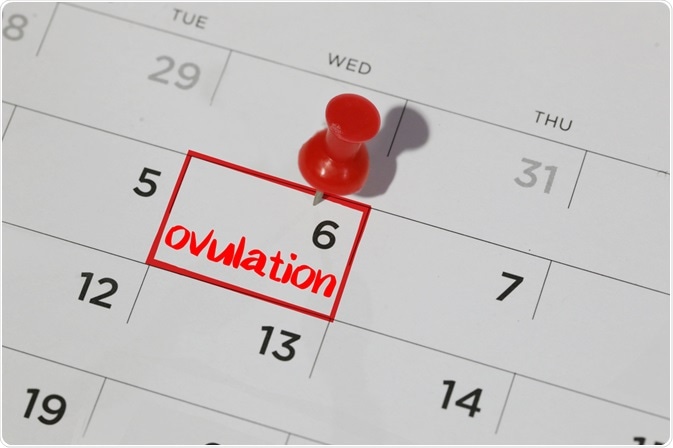As ovulation is an important part of the female menstrual cycle that carries great significance, the possibility of inducing or suppressing ovulation can prove to be very useful.
This is particularly evident for those individuals that have difficulty conceiving as ovulation can be controlled to increase the chances of conception. It also plays a large role in the process of in vitro fertilization.
 Image Credit: charnsitr/Shutterstock.com
Image Credit: charnsitr/Shutterstock.com
Induced ovulation
Induced ovulation is a process involving medication to stimulate the production of eggs and induce ovulation. Both the stimulation of the egg formation and the induction of ovulation are distinct processes but they are closely related, as both are needed for an egg to be fertilized and conception to occur.
It is particularly useful for patients with health conditions like polycystic ovary syndrome (PCOS) and oligomenorrhea, who do not ovulate regularly as other women do. This can help them to conceive a child when it would not otherwise have been possible.
A selective estrogen receptor modulator such as clomifene citrate may be used to treat anovulation infertility. It works by inhibiting negative feedback of estrogen on the hypothalamus, which increases the production of gonadotropins.
Physiologically, ovulation is triggered by a surge in luteinizing hormone. The most commonly used medical technique to induce the release of the egg involves ovarian stimulation followed by an injection that precipitates the hormonal changes for ovulation to occur.
An injection of human chorionic gonadotropin in a low dose causes ovulation to occur 24-48 hours after the injection has been administered. This method is widely used but carries a risk of ovarian hyperstimulation syndrome.
Suppressed ovulation
The suppression of ovulation is a useful way to control contraception. If ovulation does not occur, no egg is released and it is not possible for it to be fertilized or for the woman to become pregnant.
Hormone therapy can be used to interfere with the process of ovulation and control fertility. This usually focuses on suppressing ovulation with the use of female reproductive hormones estradiol and progesterone. These mimic the hormonal levels of the body after menstruation, to provide negative feedback to the ovaries and inhibit ovulation.
Additionally, for women undertaking in vitro fertilization (IVF), it is important that spontaneous ovulation does not occur, as the eggs will not be able to be collected as required. Medications to regulate the normal activity of GnRH may be used to control when ovulation occurs.
In Vitro Fertilization Ovarian Stimulation
Associated risks
Throughout the process of ovulation induction, regular ultrasounds and tests to monitor hormones are undertaken. However, there are still some risks for women that undergo this procedure such as:
- Damage to endometrium
- Ovarian Hyperstimulation Syndrome with symptoms of nausea, bloating and excessive weight gain
- Release of multiple eggs, leading to the conception of twins or triplets
As with all medical procedures, it is important to weigh up the potential benefits, usually to conceive a child, with the probability and severity of these risks. Ovulation induction can offer a useful benefit to many women but should be used selectively when it offers a favorable benefit to risk ratio.
References
Further Reading